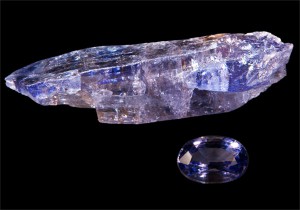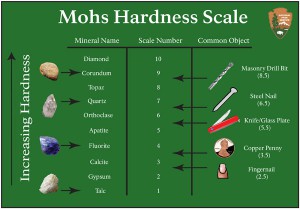Want to learn more about Tanzanite gemstone? You might have a lot of questions like, “what is Tanzanite?” or “what does Tanzanite look like?” Either way, our detailed guide includes where it comes from, the stone’s history, and how it’s formed. Find out all the answers to your Tanzanite related questions below.
What is Tanzanite Stone?
First things first, we need to know the basics. So, what is Tanzanite?
Tanzanite is a comparatively new gemstone to the market, having only been discovered in 1967. What makes it unique is that so far it has only ever been found in one location; the Mererani Hills of the Manyana Region of Northern Tanzania, situated near the foothills of Mount Kilimanjaro.
The Tanzanian government nationalised the mines in 1971 and later split them into 4 blocks, A,B,C and D in 1990, to facilitate the fair distribution of rough material between large companies and smaller local miners. To date, blocks A and C were reserved for large commercial operations, the biggest being Tanzanite One Mining Ltd, whilst blocks B and D were retained for local miners. This tight regulation of Tanzanite gemstones means that, from a customer perspective, it should be relatively straightforward to trace the origin of your stone, providing it is large enough to warrant a certificate of authenticity.
What colour does tanzanite come in?
Tanzanite is a pleochroic gem, meaning it can appear one colour when viewed from one direction, but exhibit different tones when seen from a different direction. In its raw state, Tanzanite gemstones show shades of blue, violet and brown/burgundy. However, most Tanzanite is heat treated to minimise the brown and enhance the deep violet colour which renders it dichroic (showing only 2 shades of blue and violet). This intense colour saturation (which increases with the size of the stone) is what Tanzanite is most prized for, so the deeper the colour, the more valuable the stone. This is why many examples of Tanzanite set jewellery, in particular rings, tend to be on the larger side as the colour saturation is simply too indistinct in smaller stones.
Like diamonds, Tanzanite exhibits perfect cleavage, meaning that it cleaves or breaks smoothly along the weaker bonds of the internal crystal structure of the stone. Gems can cleave in a number of different directions, but ‘perfect cleavage’ indicates that the break will be almost perfectly smooth, as opposed to a fracture which is never smooth.
How Hard is Tanzanite?
You might be wondering, how hard is Tanzanite? Interestingly, quite unlike diamonds, Tanzanite scores quite low on the Mohs scale of hardness at only 6.5, which means it can be scratched relatively easily. For anyone who is not familiar with it, Mohs Scale of Hardness was devised by the German mineralogist Friedrich Moh, as a means of establishing the relative hardness of minerals. He took 10 common minerals and placed them in order of ‘scratchability’. Each mineral can scratch those below it on the scale and be scratched by those above. See below:
Mohs Scale of Harness (Image Source: National Park Service)
How is Tanzanite Formed?
So how is Tanzanite formed? It is believed that the Tanzanite stone was first formed over 550 years ago at the base of Mount Kilimanjaro in the north of Tanzania. The stone formed when tectonic plate movement and extreme levels of heat caused the formation of Mount Kilimanjaro, at the same time the tanzanite mineral was formed. The extreme temperatures and subsequent cooling of ingenious rocks, along with high levels of pressure, caused the unique crystals to form. Due to the unique, mineral rich area near the base of Kilimanjaro, the unique Tanzanite stone was born.
What is the meaning of Tanzanite?
Due to the fact that the Tanzanite was discovered as early as the late 60s, there is not an awful lot of mystery or symbolism surrounding the stone. However, many believe that the gemstone has certain healing powers. This stems from Tanzania, where the local women who had given birth to a child would wear the blue stones to represent a healthy life for the newborn baby. Some people also believe that Tanzanite has the ability to change negative energy into positive energy for those that wear it.
What is Tanzanite Worth?
What is Tanzanite worth? As the Tanzanite gemstone is only found in an area around 4km long in Tanzania, it is extremely difficult to acquire. Due to the rarity of Tanzanite, it comes at a very expensive price. And this will only ever increase as the source of the stone in Northern Tanzania is currently expected to run out in approximately 12 years.
Much has been made of the rarity of the Tanzanite gemstone. With only one known source, it stands to reason that one day supplies will run out and Tanzanite mining will become a thing of the past. Until such point arrives, it is important we recognise the significance of the discovery of this gem and celebrate and utilise it while we still can.
“Tanzanite is the most important gemstone discovery in over 2000 years” – Henry Platt, ex-president and Chairman of Tiffany and Company.
Add a touch of striking blue and violet to your next design using Cooksongold’s range of stunning coloured gemstones available online. Shop the full range of gemstones today.


Cooksongold


